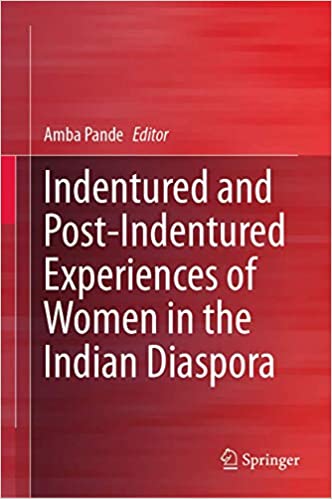Women constitute a significant composition of Indian diasporic communities universally. Even though the role of female sojourners has been invisible in diasporic accounts for considerable period of time, feminist and subaltern interventions made substantial advancement in recognizing the uniqueness and differences of women diaspora. Discourse on diaspora studies in India invariably appropriates from sociological perspectives, literary narrations, anthropological studies and political accounts. The book under review employs a multidisciplinary approach and methodology to map the struggles, challenges, agency and resilience of indentured and post-indentured Indian women. The volume underlines theoretical scholarship and narrative accounts on indentured Indian women in regions of Africa, Asia-Pacific and Caribbean. It offers a combination of historiography of indentured Indian emigration, exploitative and emancipatory dimensions of indenture, perspectives on liminality and agency by means of discourse, literary accounts, memories and oral histories. In addition, it examines the push and pulls factors of indenture, subjugation and exploitation of indentured women, individual and collective resistance, activism and organizational skills.
The text locates women at the spheres of political economy and socio-cultural formations in the context of indenture. The papers investigate the double burden of systemic subjugation and exploitation of indentured women. The authors also situate culture as a source of oppression as well as emancipation in patriarchal communities. Broadly, indentured Indian women fit into Robin Cohen’s typology of labour diaspora. Economic and social exploitation of indentured women is a serious concern for both feminist inquiries and migration studies. The role of culture in reproduction and reinvention of diasporic identities is pertinent to contemporary academic interventions. A number of gendered perspectives the volume explores invariably widen the scope not only of research but also resistance strategies employed by the women diaspora.


I like this web blog very much, Its a rattling nice berth to read and incur information.Expand blog